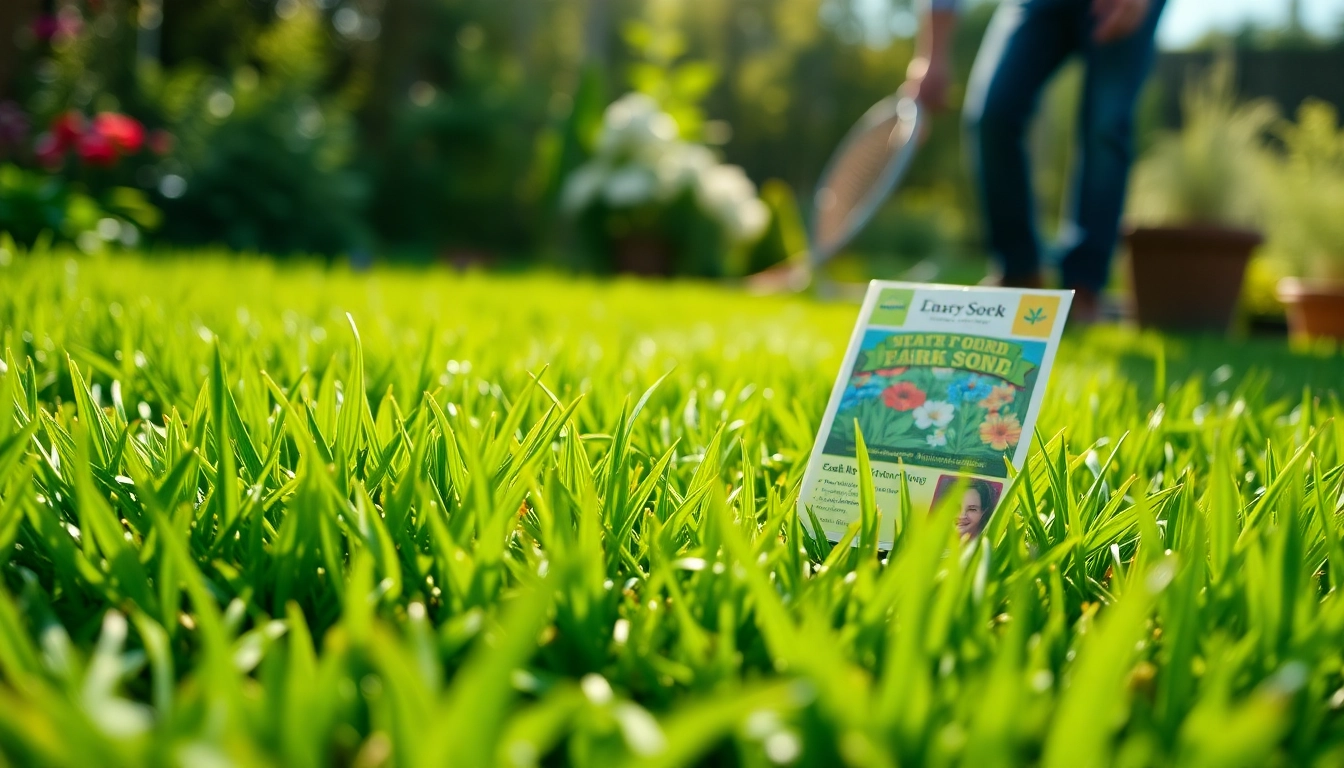Master the Art of Over Seeding: A Step-by-Step Guide for a Thriving Lawn

Understanding Over Seeding Basics
What is Over Seeding?
Over seeding is a lawn care technique that involves the planting of grass seed directly into existing turf without disturbing or tearing up the current lawn. This method serves multiple purposes, including filling in bare spots, enhancing the lawn’s overall appearance, and improving its health. Essentially, over seeding can help thicken the grass, making it more resilient against pests, diseases, and environmental stresses. By integrating new seed varieties, homeowners can also introduce traits like drought resistance or shade tolerance to their lawns.
Benefits of Over Seeding Your Lawn
The benefits of over seeding are extensive. Some of the most notable advantages include:
- Improved Lawn Density: Over seeding helps create a thicker carpet of grass, which can compete better against weeds.
- Enhanced Appearance: A deeper, richer color can be achieved by introducing high-quality seed varieties.
- Increased Resistance: New grass types can be more resistant to diseases and pests, ensuring a healthier lawn.
- Better Tolerance: Different grass varieties offer varied levels of drought and shade tolerance, allowing for a more adaptable lawn.
- Soil Health: Over seeding encourages root growth, which can improve the soil structure over time.
When is the Best Time to Over Seed?
The timing of over seeding is crucial for success. The best time to over seed a lawn typically falls in late summer to early fall. During this period, soil temperatures are warm enough to encourage seed germination while the cooler air temperatures help reduce evaporation. Establishing new grass before the colder winter months can significantly improve its chances of survival and growth in the spring. Additionally, a fall seeding allows the new seedlings to develop strong root systems before the stress of heat and drought in the summer.
Preparation for Over Seeding
Assessing Your Lawn’s Condition
Before you start the over seeding process, it is essential to assess your lawn’s condition. Look for areas that are thin or bare and take note of any spots that need attention. Check for thatch buildup, soil compaction, and the overall health of the existing turf. Consider using a lawn aerator if you notice significant compaction; this will help improve soil aeration and water absorption, which are critical for new seedlings.
Tools and Materials Needed
Gather the necessary tools and materials before you begin. The following items are typically needed for a successful over seeding project:
- Grass seed of suitable varieties for your region.
- Lawn aerator (for compacted lawns).
- Rake for dethatching and soil preparation.
- Spreader for even seed distribution.
- Starter fertilizer to promote early growth.
- Watering system (hose or irrigation) to maintain adequate moisture levels.
Preparing the Soil for New Seed
Preparing the soil is a fundamental step in the over seeding process. Start by mowing your lawn shorter than usual, ensuring to bag the clippings to reduce debris. Next, rake the lawn to disturb the top layer of soil, breaking up any thatch and creating a good seed-to-soil contact. If you opted to use an aerator, be sure to aerate before raking as this enhances the effectiveness of the seed placement. Afterward, apply a light layer of compost or topsoil to cover the bare spots and facilitate seed germination.
How to Effectively Over Seed
Step-by-Step Over Seeding Process
Implementing the over seeding process can be summarized in a few easy steps:
- Assess and Prepare: Evaluate your lawn and carry out soil preparation tasks.
- Choose the Right Time: Plan for late summer or early fall for the best results.
- Select Quality Seed: Choose grass seed that suits your climate and lawn use.
- Distribute Seed: Using a spreader, distribute the seed evenly across your lawn.
- Water Thoroughly: Lightly water immediately after seeding and maintain moisture for germination.
Choosing the Right Grass Seed
Choosing the correct grass seed is essential for the success of your over seeding project. Factors to consider include your regional climate, sun exposure, soil type, and your lawn’s intended use. For instance, if your lawn experiences a lot of foot traffic, a durable fescue blend might be ideal, while for shaded areas, a shade-tolerant grass accommodates less sunlight. Local gardening centers and extension services often provide guidance on the best grass seed types for your area.
Techniques for Even Seed Distribution
Even seed distribution is critical for achieving a uniform lawn. Use a broadcast spreader, which regulates the seed flow and ensures that seeds are spread evenly over the surface. For smaller areas or patches, a handheld seed spreader or even shaking seeds by hand can suffice. Regardless of the method, try to overseed in multiple directions (north-south, then east-west) to ensure that the seeds reach gaps and bare spots adequately.
Post-Over Seeding Care
Watering Instructions After Over Seeding
Post over seeding care directly influences the establishment of new grass. Keep the soil consistently moist for the first few weeks. Water lightly at least once a day, reducing the frequency as the seedlings establish. After the grass reaches about 2 inches tall, you can gradually transition to deeper, less frequent watering to encourage deeper root growth.
Fertilization Tips for Growth
Applying a starter fertilizer at the time of over seeding can bolster early growth. Select a fertilizer that is high in phosphorus, as this nutrient is instrumental in root development. Follow package instructions for application rates and timing, usually applying it right after seeding to give your grass an early boost and nourish the new seedlings.
Maintaining Your Lawn After Over Seeding
After the over seeding process, maintain your lawn by avoiding heavy foot traffic while the new grass is establishing. Continue to mow regularly once the new grass reaches about 3 inches in height. Allow the new grass to grow a little longer initially to help it withstand the stress of cutting. Additionally, maintain a healthy lawn care routine with proper fertilization and regular watering schedules to ensure long-term success.
Troubleshooting Common Issues
Identifying and Solving Over Seeding Problems
Despite your best efforts, issues may arise during the over seeding process. Common problems include:
- Poor Germination: If the grass fails to grow, review your watering practices, ensuring consistent soil moisture without waterlogging.
- Weed Growth: Weeds can become a problem if they weren’t managed prior. Ensure you maintain your mowing and watering schedule to compete against weeds.
- Uneven Coverage: If you notice certain spots are denser than others, it may be due to uneven seed distribution. Consider re-seeding particularly sparse areas.
Preventing Weeds Post Over Seeding
Preventing weeds after over seeding requires vigilance and proactive measures. Avoid using chemical weed controls until the newly seeded grass has been mowed at least three times. This will ensure the new grass has developed enough to withstand any potential harm from herbicides. Instead, focus on maintaining a healthy lawn through regular mowing, a consistent watering schedule, and proper fertilization. Choose mulch or natural covers for bare spots to minimize weed growth.
Measuring Success: Indicators of a Thriving Lawn
To evaluate the success of your over seeding efforts, look for the following indicators:
- A uniform, lush appearance across the lawn.
- Thick grass that effectively crowds out weeds.
- Strong root systems evidenced by resilience against drought and foot traffic.
- Minimal bald patches with effective coverage across all previously thin areas.







